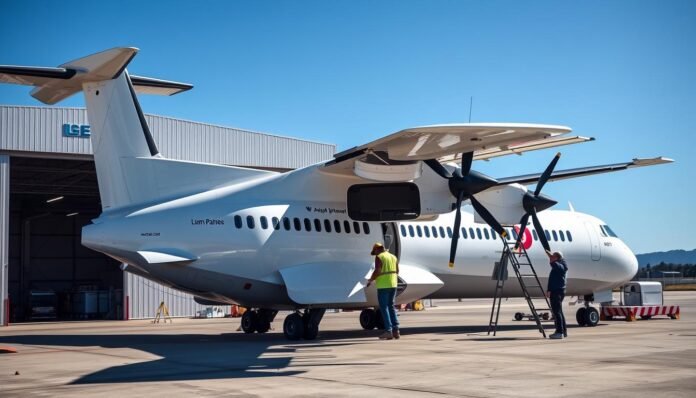The Federal Aviation Administration has issued a new airworthiness directive (AD 2025-20-01) targeting ATR42-500 and ATR72 aircraft, set to take effect on November 6, 2025. This directive addresses potential safety concerns with the travel limitation unit (TLU) that could affect rudder control systems. Aviation operators must implement specific modifications to ensure continued airworthiness and prevent potential safety incidents.
Access Official Directive Documentation
Download the complete FAA Airworthiness Directive 2025-20-01 for comprehensive technical details and compliance requirements.
ATR72 aircraft with rudder systems targeted by the new FAA directive
Policy Overview: Understanding the New Airworthiness Directive
The FAA’s new airworthiness directive (AD 2025-20-01) addresses a critical safety concern identified in certain ATR—GIE Avions de Transport Régional Model ATR42-500 and ATR72 airplanes. The directive targets explicitly an issue with the travel limitation unit (TLU) that could potentially affect rudder control systems during flight.
Key Directive Details:
- Effective Date: November 6, 2025
- Affected Models: ATR42-500, ATR72-101, -102, -201, -202, -211, -212, and -212A
- Amendment: 39-23154
- Docket Number: FAA-2025-1354
- Project Identifier: MCAI-2025-00012-T
This directive requires operators to modify affected aircraft by installing one or two relays and associated wiring, followed by comprehensive testing of the TLU monitoring logic. These modifications are essential to prevent potential safety incidents that could result from erroneous TLU behavior.
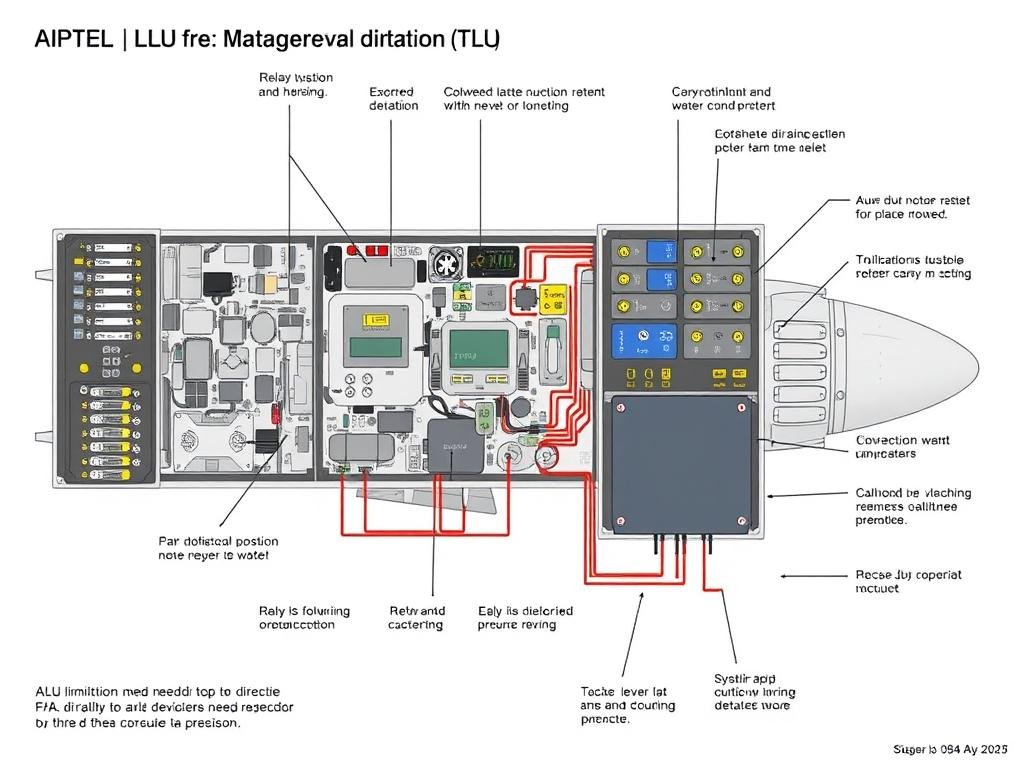
Technical diagram of the TLU system requiring modification under the new directive
Background & Context: The Safety Concerns Behind the Directive
The FAA’s investigation was prompted by an ATR internal review of the TLU new avionics suite design. This review identified a potentially dangerous behavior of the core processing module (CPM) 2, which hosts the data concentration application (DCA) 2. This issue could significantly affect the TLU command, monitoring, and indication systems.
Further investigation revealed that an erroneous monitoring of the TLU could occur when the aircraft is flying above certain speeds due to logic input issues from either air data computer (ADC) 1 or ADC2. This technical flaw creates a serious safety concern that necessitated regulatory intervention.
“This condition, if not corrected, could result in the rudder deflection not being limited at high airplane speed, which, if combined with a large rudder pedal input, could lead to the loss of control of the airplane.”
The directive follows the European Union Aviation Safety Agency’s (EASA) earlier action through AD 2025-0004, dated January 7, 2025, which identified the same unsafe condition. The FAA’s directive aligns with international safety standards while ensuring U.S. operators implement necessary modifications.

Maintenance technicians are implementing modifications required by the FAA directive
Stakeholders & Affected Parties
The FAA estimates that this airworthiness directive affects 43 airplanes of the U.S. registry. Multiple stakeholders across the aviation industry will need to respond to these new requirements:
Aircraft Operators
- Regional airlines operating ATR fleets
- Charter services using affected models
- Cargo carriers with ATR42/72 aircraft
- Corporate flight departments
Maintenance Organizations
- MRO facilities servicing ATR aircraft
- Avionics specialists
- Component repair centers
- Aircraft modification facilities
Regulatory Bodies
- FAA inspectors and field offices
- EASA coordination personnel
- International aviation authorities
- Safety oversight organizations
Additionally, ATR—GIE Avions de Transport Régional, as the manufacturer, will play a crucial role in providing technical support, service bulletins, and implementation guidance to affected operators.
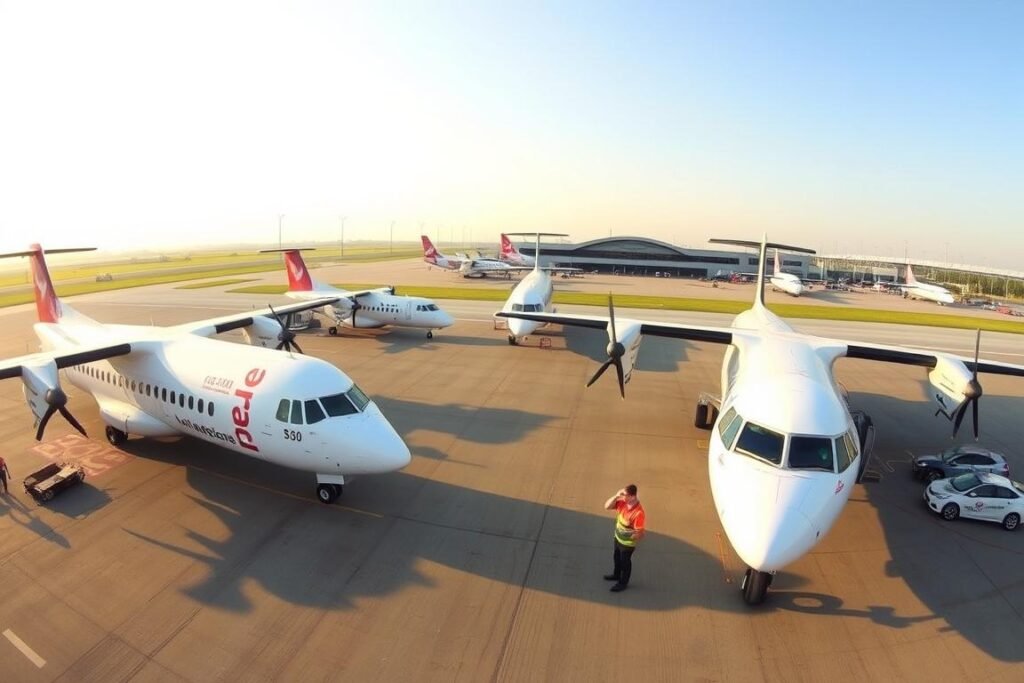
Regional airline ATR fleet is subject to the new airworthiness directive requirements.
Stay Updated on Aviation Regulatory Changes
Subscribe to AviationRegWatch.com’s alert service to receive timely notifications about new airworthiness directives and policy updates affecting your fleet.
Industry & Expert Reactions
Aviation safety experts and industry analysts have responded to the new directive with a focus on its technical merits and implementation challenges. While the directive addresses a critical safety concern, some stakeholders have expressed concerns about the implementation timeline and associated costs.
“This directive addresses a significant safety concern with the TLU system that could potentially lead to catastrophic outcomes if left uncorrected. The FAA’s action aligns with global best practices in proactive safety management.”
“Regional operators will need to carefully plan maintenance schedules to implement these modifications without significant disruption to operations. The technical complexity requires specialized expertise that may be in limited supply.”
ATR—GIE Avions de Transport Régional has issued a statement supporting the directive and confirming that they are prepared to assist operators with implementation through technical support and parts availability. The manufacturer emphasized that safety remains their highest priority and that the modifications are designed to be integrated with minimal operational impact.

FAA inspection team reviewing compliance documentation for affected ATR aircraft
Implementation Challenges & Risks
Operators of affected ATR aircraft face several challenges in implementing the required modifications within the compliance timeline. Understanding these challenges is essential for effective planning and resource allocation.
Implementation Considerations
- Technical expertise requirements for proper modification
- Parts availability and supply chain considerations
- Documentation and certification of completed work
- Training requirements for maintenance personnel
- Quality control and testing procedures
Potential Risks
- Aircraft downtime affects operational schedules
- Costs exceeding initial estimates (up to $4,164 per aircraft)
- Unforeseen technical complications during installation
- Limited availability of qualified technicians
- Compliance verification challenges
| Cost Component | Per Aircraft | U.S. Fleet Total (43 Aircraft) |
| Labor (up to 15 work-hours @ $85/hour) | $1,275 | $54,825 |
| Parts (relays and wiring) | $2,889 | $124,227 |
| Total Estimated Cost | $4,164 | $179,052 |
The FAA notes that some or all costs may be covered under the manufacturer’s warranty for eligible aircraft, potentially reducing the financial impact on operators. However, this will vary based on individual aircraft status and warranty agreements.
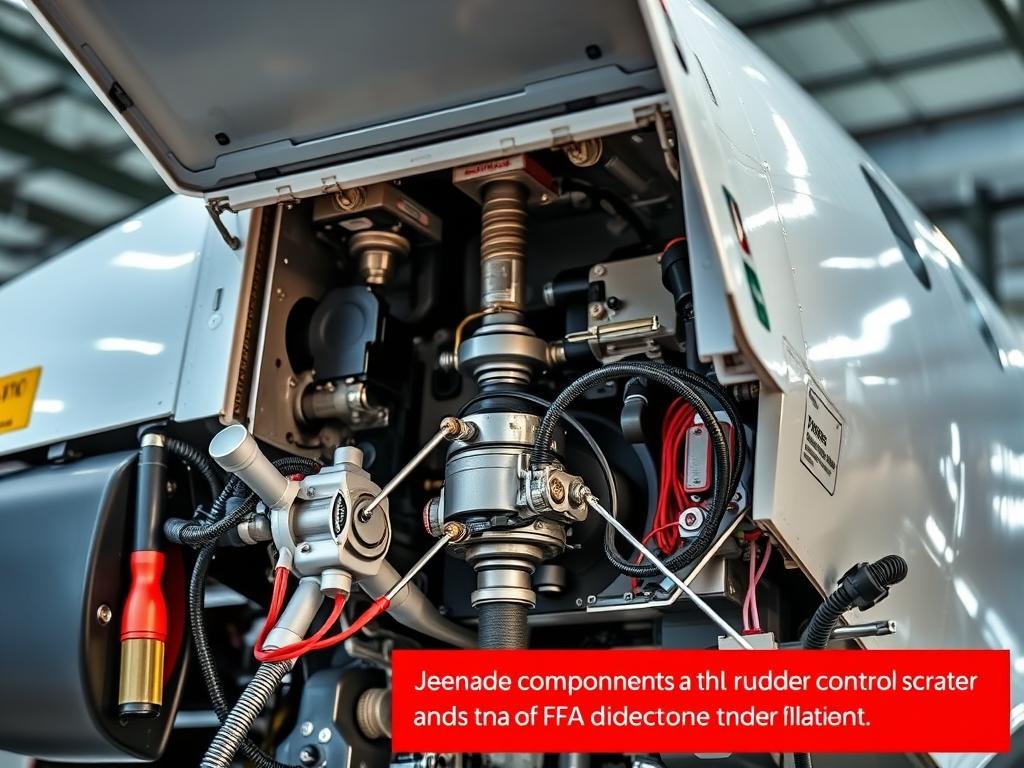
Detailed view of rudder control systems requiring modification under the directive
Solutions & Best Practices for Compliance
To facilitate efficient compliance with the new airworthiness directive, operators should consider implementing the following best practices and solutions:
Recommended Implementation Approach
- Conduct a fleet-wide inventory to identify all affected aircraft
- Schedule modifications during planned maintenance events when possible
- Order necessary parts well in advance of compliance deadlines
- Ensure maintenance personnel receive specific training on the modification procedures
- Develop a comprehensive testing protocol to verify proper implementation
- Maintain detailed documentation for regulatory compliance verification
Technical Implementation Resources
Operators should utilize the following resources to ensure proper implementation:
- EASA AD 2025-0004 (incorporated by reference in the FAA directive)
- ATR Service Bulletins related to TLU system modifications
- FAA Advisory Circulars on compliance with airworthiness directives
- Manufacturer technical support services and documentation
- Third-party MRO facilities with ATR expertise and certification
Operators should also consider establishing a dedicated project team to oversee implementation across their fleet, ensuring consistent application of the required modifications and thorough documentation of all work performed.
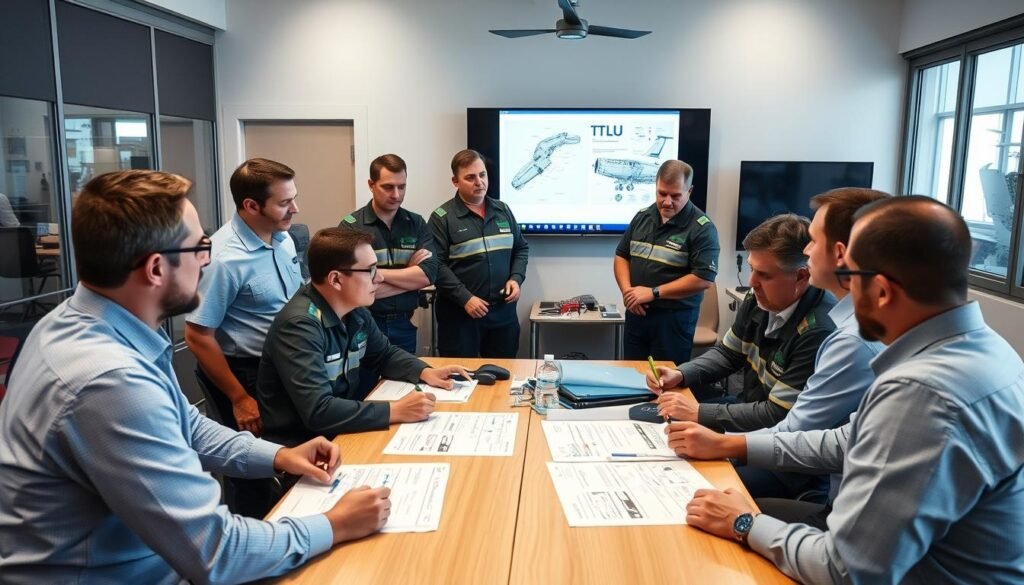
Maintenance team planning implementation strategy for the new directive requirements
Future Outlook: Long-Term Implications
The implementation of this airworthiness directive represents part of an ongoing evolution in aviation safety management for regional aircraft. Looking beyond immediate compliance, several significant trends and developments are likely to emerge:
Regulatory Trends
This directive reflects the increasing coordination between international aviation authorities like the FAA and EASA. Future directives will likely continue this harmonized approach, with greater emphasis on proactive identification of potential safety issues before incidents occur.
Technical Evolution
The TLU system issues identified in this directive may accelerate the development of more robust flight control monitoring systems in future aircraft designs. Manufacturers are likely to implement enhanced redundancy and failure detection capabilities in next-generation regional aircraft.
Operational Implications
As these modifications are implemented across the global ATR fleet, operators will need to update training programs, maintenance protocols, and potentially flight procedures to reflect the changes to TLU system operation and monitoring.
The aviation industry can expect continued regulatory focus on critical flight control systems, particularly as digital avionics suites become more complex and integrated. This directive represents an important step in addressing the challenges of ensuring safety in increasingly sophisticated aircraft systems.

Next-generation ATR cockpit systems with enhanced TLU monitoring capabilities
Suggestions for Policy Amendments
Based on industry feedback and implementation considerations, several potential refinements to the directive’s implementation could enhance effectiveness while minimizing operational disruption:
Implementation Timeline
Consider a phased implementation approach based on aircraft utilization and maintenance schedules, while maintaining the same final compliance deadline. This would allow operators to distribute resources better and minimize operational impacts.
Technical Support
Establish dedicated technical support channels between the FAA, manufacturers, and operators to address implementation questions and challenges in real-time, potentially through a specialized task force.
Documentation Requirements
Develop standardized documentation templates and electronic submission processes to streamline compliance verification and reduce administrative burden on operators and inspectors.
Training Resources
Create industry-wide training resources and certification programs for maintenance personnel to ensure consistent implementation quality across all affected aircraft.
These suggestions aim to maintain the directive’s safety objectives while optimizing the implementation process for all stakeholders. The FAA’s openness to industry feedback through the AMOC process provides a mechanism for addressing specific implementation challenges as they arise.
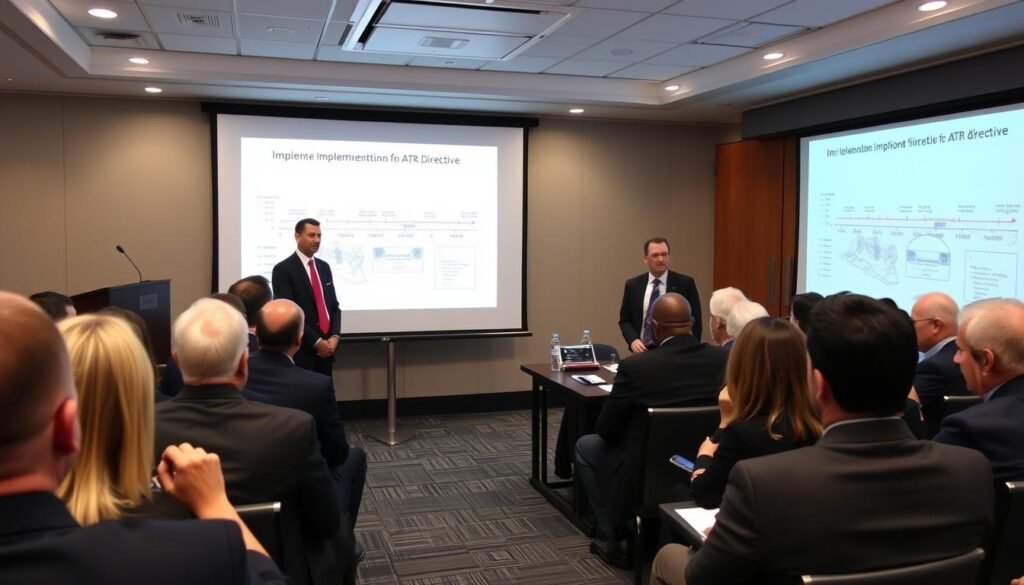
FAA and industry stakeholders are collaborating on implementation strategies
Conclusion: Ensuring Aviation Safety Through Regulatory Compliance
The FAA’s new airworthiness directive for ATR42-500 and ATR72 aircraft represents a critical step in addressing a potentially serious safety concern with the travel limitation unit system. By requiring specific modifications to prevent erroneous TLU behavior, the directive aims to eliminate a condition that could lead to loss of aircraft control under certain circumstances.
While implementation presents technical and operational challenges for affected operators, the directive’s safety benefits clearly justify the required actions. The estimated cost of up to $4,164 per aircraft represents a relatively modest investment in ensuring continued safe operation of these widely used regional aircraft.
Operators, maintenance organizations, and regulatory authorities must work collaboratively to ensure timely and effective implementation across the U.S. fleet of 43 affected aircraft. By following best practices and leveraging available technical resources, the industry can achieve full compliance while minimizing operational disruption.
This directive underscores the aviation industry’s ongoing commitment to proactive safety management and the importance of international regulatory coordination in addressing potential safety issues before they result in incidents or accidents.
Need Expert Guidance on Directive Implementation?
AviationRegWatch.com’s compliance specialists can help you navigate the technical requirements and documentation processes for this new airworthiness directive.

ATR aircraft are operating safely following the implementation of required safety modifications

